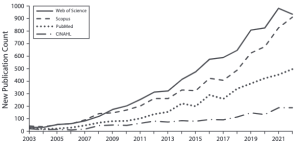Built Environment and Public Health: More Than 20 Years of Progress
Citation
Rollings, K. A., Dannenberg, A. L., Frumkin, H., & Jackson, R. J. (2024). Built Environment and Public Health: More Than 20 Years of Progress. American Journal of Public Health, 114(1), 27-33. https://doi.org/10.2105/ajph.2023.307451
In fall 2023, it had been 20 years since the American Journal of Public Health published a special issue on the “Built Environment and Health.” That issue helped renew collaboration between experts in health, city planning, and design—fields that all play a role in shaping how our surroundings affect our well-being.
Public health and urban planning have a long shared history. In the late 1800s and early 1900s, efforts to improve things like clean water, air, housing, sanitation, and workplace safety led to major gains in health and life expectancy. Over time, these fields drifted apart and worked more separately, but in recent decades, they have begun to reconnect.
This 20-year anniversary provides a chance to look back on how far we’ve come in understanding how the built environment—the places where we live, work, learn, and play—affects our health. The article reviews progress in research, real-world practice, education, and policy. It also looks ahead to what’s needed next to continue improving health through better design of our communities.
Abstract

Fall 2023 marked 20 years since the AJPH “Built Environment and Health” (BEH) special issue. The issue highlighted the reengagement of health and design professions and growing interest in the built environment’s potential to improve health. Public health and urban planning linkages were not new. Late 19th- and early 20th-century efforts to improve air, water, food, and housing quality; sanitation; and workplace safety contributed to better quality of life and increased life expectancy. The sectors became isolated over time, with little collaboration until recent decades. The anniversary of the special issue offers an opportunity to inventory progress in BEH: combined perspectives from public health, urban planning, architecture, transportation, and related fields on how the physical components of where we live, work, learn, and play influence health. The following sections contain an overview of BEH progress in research, practice, education, and policy, as well as current context and future priorities.